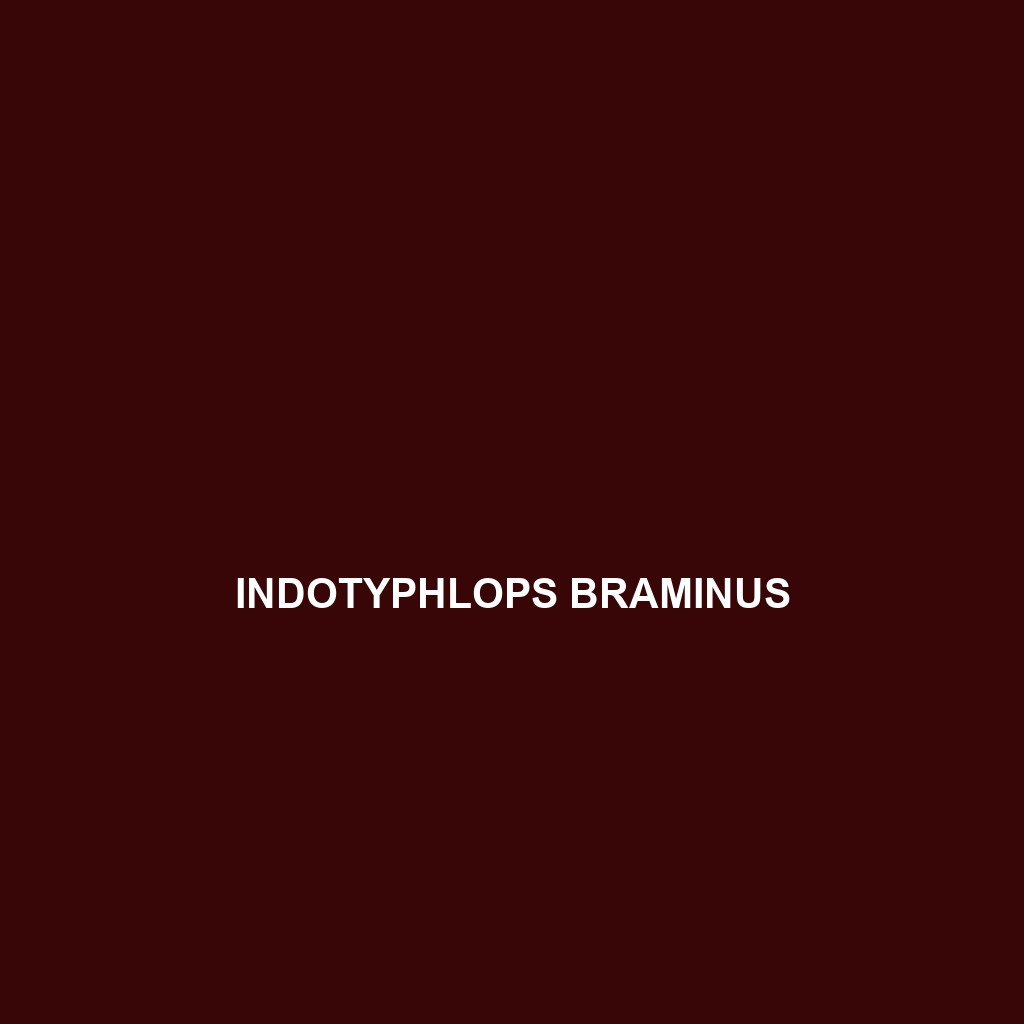<strong>Pseudoindotyphlops exiguus</strong>, commonly known as the slender blind snake, thrives in the tropical and subtropical regions of Southeast Asia, featuring a smooth, cylindrical body that reaches 20-30 cm in length. Primarily nocturnal and fossorial, this insectivorous species excels at hunting ants and termites in its humid forest habitat, contributing significantly to soil aeration and ecosystem balance.
Tag: small snake species
Ramphotyphlops multilineatus
<p><b>Ramphotyphlops multilineatus</b>, commonly known as the thread snake, is a small, nocturnal insectivore found in tropical and subtropical habitats of Southeast Asia and West Africa. This slender snake, measuring 25 to 30 centimeters, features a smooth, camouflaged body and plays a crucial role in pest control by preying on soil-dwelling insects, enhancing ecosystem health.</p>
Ramphotyphlops flaviventer
Discover the Ramphotyphlops flaviventer, also known as the yellow-bellied blind snake, a small, elusive species native to the tropical regions of Central and South America. With a slender body reaching up to 70 cm and a striking yellow underside, this nocturnal insectivore plays a crucial role in regulating invertebrate populations and maintaining soil health through its burrowing habits.
Pseudoindotyphlops exiguus
<strong>Pseudoindotyphlops exiguus</strong>, commonly known as the slender blind snake, thrives in the tropical and subtropical regions of Southeast Asia, featuring a smooth, cylindrical body that reaches 20-30 cm in length. Primarily nocturnal and fossorial, this insectivorous species excels at hunting ants and termites in its humid forest habitat, contributing significantly to soil aeration and ecosystem balance.
Malayotyphlops andyi
The Malayotyphlops andyi, also known as the blind snake, thrives in the tropical rainforests of Southeast Asia, characterized by its streamlined body, vestigial eyes, and nocturnal feeding habits primarily on small invertebrates. This species plays a crucial role in its ecosystem by controlling insect populations and serving as a prey item for larger predators.
Leptotyphlops telloi
Discover the Leptotyphlops telloi, commonly known as Tell's Worm Snake, an insectivorous species found in the subtropical and tropical regions of Africa. This slender, burrowing snake, reaching lengths up to 30 inches, thrives in savannas and temperate forests, playing a vital role in regulating insect populations.
Indotyphlops braminus
<p>Discover the <b>Brahminy Blindsnake</b> (<i>Indotyphlops braminus</i>), a non-venomous, burrowing snake thriving in tropical and subtropical habitats. With its glossy, cylindrical body and small, vestigial eyes, it primarily feeds on soil-dwelling invertebrates and plays a crucial role in maintaining ecological balance.</p>
Epictia borapeliotes
Epictia borapeliotes is a small, slender snake found in tropical and subtropical rainforests of Central and South America, known for its impressive camouflage and nocturnal behavior, preying on small invertebrates. This species plays a crucial role in its ecosystem by regulating invertebrate populations while serving as prey for larger predators.
Epictia albifrons
<strong>Epictia albifrons</strong>, also known as the white-fronted snake, is a small, slender insectivore native to tropical and subtropical regions of Central America, characterized by its distinctive cream-colored underside and primarily nocturnal behavior. This species plays a vital role in its ecosystem by regulating invertebrate populations while utilizing its impressive camouflage to evade predators.
Epictia albipuncta
Discover the fascinating White-Spotted Snake (Epictia albipuncta), a slender, nocturnal species native to the rainforests of Central and South America. With its striking white and yellow spotted pattern, this insectivorous snake plays a crucial role in regulating invertebrate populations and serves as an important indicator of environmental health.








